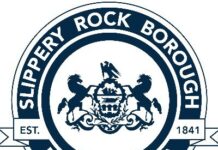California’s Silicon Valley Bank and New York’s Signature Bank both were shut down by their state agencies before being taken over by the Federal Deposit Insurance Corporation (FDIC) earlier this month.
Established in 1983, the Silicon Valley Bank (SVB) failed on March 10.
SVB, the 16th largest bank in the United States, had been successful previously by doing business with venture capital firms and played a significant role in the tech industry, according to NPR.
The banking institution served nine countries and had 17 branches in California and Massachusetts. Silicon Valley Bank was a prominent leader in the start-up ecosystem, according to The New York Times.
Days before SVB fell victim to a classic bank run– or sudden withdrawal of deposits– their depositors were spooked after the bank was forced to sell a bond portfolio in an attempt to raise its capital. In doing so, the bank took a $1.8 billion loss.
The California Department of Financial Protection and Innovation appointed the FDIC as “receiver,” making the FDIC responsible for almost $175 billion in customer deposits.
While SVB was failing, many investors began dumping stocks from banks including First Republic, Signature Bank and Western Alliance.
The failure of Signature Bank soon followed, closing on March 12, partially due to the panic surrounding SVB, according to the New York Times.
The 24-year-old banking institution, Signature Bank, dealt mostly with real estate lending and cryptocurrency deposits.
Signature Bank served 40 branches across the country before it was closed by the New York State Department of Financial Services.
John Golden is a law and finance professor at Slippery Rock University. Golden is also the owner of Golden Intergroup, Inc., a private sustainable business consulting firm.
In Golden’s opinion, there are two main reasons for the collapse: Interest rates and liquidity risk– cash on hand.
Within the last year, the Federal Reserve has raised the prime interest rate to 4.9%.
Both Signature Bank and SVB held assets in cash below the industry average, according to PBS, with SVB holding 7% of cash on hand and Signature Bank holding just over 5%.
According to Golden, SVB invested heavily in bonds and was shorthanded on cash. When interest rates go up, the market value of the bonds goes down. Since the interest rate rose so high so quickly, the bonds lost their value, and their assets plummeted, he said.
Golden explained that since many of the depositors at SVB were entrepreneurs, the money held by the bank was needed to run daily operations.
PBS reported that about 88% of deposits at SVB and roughly 90% of deposits at Signature Bank were uninsured, meaning these depositors had a lot on the line.
When venture capitalists who have invested in these business owners, started airing their concerns about SVB, many people withdrew their money, and SVB did not have the cash to cover the withdrawals, Golden said.
After the 2008 recession, small, medium and large-sized banks were all required to participate in bank stress tests to demonstrate that they had enough cash reserves and a diversified portfolio, in case they ran into trouble, according to Golden.
But during former President Donald Trump’s administration, he did away with stress tests for medium and small banks, Golden said.
The FDIC was appointed as receiver for both of the Insured Depository Institutions– the banks– meaning the FDIC assumed responsibility for recovering the maximum amount of assets possible in an attempt to redistribute money back to creditors, up to $250,000 required by law.
A joint statement from the Federal Reserve, FDIC and the Department of the Treasury, published March 12, said that actions have been approved to allow the FDIC to complete its resolution of SVB “in a manner that fully protects all depositors.”
They announced that a similar systemic risk exception would be used for Signature Bank. Their depositors, like SVB, would be made whole, with “no losses borne by the taxpayer” in the resolution of either bank.
The FDIC released a statement of its own on March 12, announcing that additional funding will be provided to eligible banks to ensure they have the ability to meet their depositor’s needs through the Bank Term Funding Program (BTFP).
In an additional press release on March 12, the FDIC announced it has acted on its position as receiver and transferred insured and uninsured deposits of Signature Bank to a bridge bank– a chartered national bank that operates under a board appointed by the FDIC– so that customers could access their funds by the next morning.
A day later, the FDIC announced similar measures for SVB, opening Silicon Valley Bridge Bank and allowing depositors to access their funds the same day.
President Joe Biden addressed the country March 13 in regard to the second and third biggest bank failures in the nation’s history.
“Americans can have confidence that the banking system is safe,” Biden said. “Your deposits will be there when you need them.”
In his speech, Biden told citizens who used these banks that they will have access to funds, allowing small businesses to continue payroll and stay open for business.
Biden also said that his administration will be looking for accountability, stating that management at both SVB and Signature Bank will be fired and that they are investigating how these banks got into the circumstances that lead them to fail.
He reminded investors that they took a risk with their money and that they will not be protected.
“That’s how capitalism works,” Biden said in regard to investors losing money.
In the following days, bank stocks continued to teeter. The US Justice Department and the Securities and Exchange Commission opened an investigation into the cause of SVB’s failure.
Many banks took advantage of the BTFP, borrowing a total of $53.7 billion from the emergency loan program as of Wednesday, according to CNBC.
On March 16, a third bank almost failed, until eleven of the largest banks in the nation bailed them out. First Republic Bank, the 14th largest bank in the US, had lost three-quarters of its value in a matter of days since SVB’s initial collapse, according to The New York Times.
In efforts to keep First Republic Bank afloat, eleven banks put forward a total of $30 billion to aid First Republic. JPMorgan Chase, Wells Fargo, Bank of America and Citigroup put forward the most, according to The New York Times, each making $5 billion deposits.
On March 19, the FDIC announced that it found a buyer for Signature Bridge Bank and that the 40 branches formerly owned by Signature Bank will now operate under New York Community Bancorp’s Flagstar Bank.
The FDIC is still acting as receiver for SVB and announced March 20 that it has extended the bidding process so it can continue to explore options presented to it by multiple parties with substantial interest.
Pennsylvania’s 16th District Congressman Mike Kelly said while these banks collapsing is not the same as the financial crisis in 2008, he hopes that Congress will work to find solutions to the financial problems that impact all Americans.
Kelly said that he is concerned about the financial state of many large banks, both domestically and abroad, but has some confidence in local banking institutions.
“I have spoken with leaders of some regional banks in our area and they assure me they are in a better financial position than SVB and Signature Bank,” Kelly told The Rocket.
SRU Credit Union, which is actually not affiliated with the university but open to students and members of the Slippery Rock community, said that even though it is not a for-profit banking institution, it still has to pay attention to what is happening in the financial market.
Lynne Griffith-Gagnon, SRU Credit Union’s CEO, explained that the biggest difference between credit unions and banks is that credit unions are member-owned.
While a bank has shareholders, SRU Credit Union has members who get to participate in an election for directors, who volunteer at the credit union and serve on a board that guides decisions and financial plans for the credit union, she said.
Banks and credit unions also differ in their government regulators. Although the rules and insurance are very similar, banks report to the FDIC, and credit unions report to National Credit Union Association (NCUA).
Griffith-Gagnon said that neither she nor the board members at SRU Credit Union were worried for their members at any point after SVB and Signature Bank collapsed.
“Whether it’s a bank or it’s a credit union, your money is insured up to $250,000,” Griffith-Gagnon said. “So unless you have more than $250,000, you have nothing to worry about.”
“If you have more than $250,000, I certainly recommend getting a financial advisor,” she continued. “There are ways to get insurance coverage in excess of that [amount] depending on how the account is titled.”








